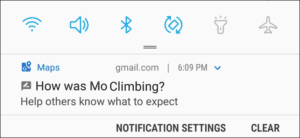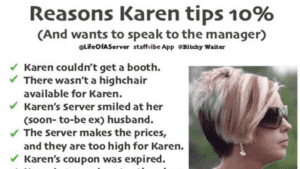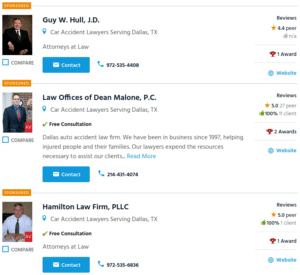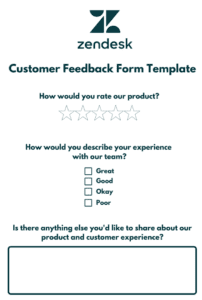The Internet and social media have introduced a new standard that is now taken for granted: the peer testimonial. Modern generations have grown to distrust “Madison Avenue” style marketing, in favor of word-of-mouth recommendations. It’s true that word-of-mouth existed before social media (and the Internet), but the digital world has put that power in people’s hands in a way that is more accessible. With a simple search from their mobile device, consumers can gain insight into what it’s like to do business with a company. Based on what they find, they’ll either choose that business or search for another option. Reviews can make or break a business.
Consumers are most likely to seek out reviews for businesses they aren’t familiar with, especially in an industry they don’t patronize often. Most of us are willing to try out a new fashion boutique on our own without stopping to consult reviews. But when deciding on a higher-stakes purchase like legal services, medical care, or even an auto mechanic, we tend to want to check out the reputation of that business.
Every business should be aware that the digital spotlight is always watching. Without online reputation management, negative reviews will dominate. One bad faith actor can easily swamp a business. In the face of the occasional online troll, an unethical competitor with a grudge, and just plain spoilsports, you can’t leave your online reputation to take care of itself.

The Google Guides program is just one example of how easily consumers can submit reviews and ratings. Thanks to location-tracking, your phone can tell when you’ve visited a business and it will send a notification asking you to rate your recent experience. Most of us will have a positive experience to report by default, but let’s not forget that if a customer found fault with a business, this gives them a golden opportunity to vent. If you don’t have a strategy to manage those negative reviews, your digital reputation will be tarnished.
When we see businesses with a poor reputation online, most of the time it’s through neglect of attention to this regard. But surely, those five negative reviews aren’t the only customers the business has had! The problem is usually that the business hasn’t been encouraging their happier customers to leave good feedback.
Develop a Review Encouragement Program
First off, we must caution against outright bribing people for good reviews. Hence, we didn’t call this an “incentive program.”
But it’s perfectly ethical to encourage customers to leave feedback. Moreover, simply pursuing feedback nearly guarantees that your ratings will go up. This is because most people are reasonable and try to be fair. It just seems like the world is filled with spoilsports because they make the most noise and draw the most attention online. The rest of us don’t cause as much trouble because we have better things to do.

To encourage feedback:
- Identify points in your sales process where you have an opportunity for feedback. Usually, this will be after your first completed transaction.
- Train your staff to remind customers to leave feedback with you, possibly through a script.
- Make it as easy as possible for the customer to leave feedback. Make it quick and unobtrusive. One or two clicks.
- Incentivize employees to capture feedback—for instance, if they are mentioned by name in a good review, offer a small bonus.
There are tools to help you solicit feedback and reviews, such as BirdEye. This is a software suite that handles review reminders for Google Guide ratings, customer referral programs, email correspondence, and other remarketing tools. The two primary channels for soliciting customer reviews are SMS text messaging and emails, both of which can be triggered automatically from your customer relationship management (CRM) or email marketing software.

Manage Your Google My Business Listing
Google My Business (GMB) has become the behemoth of online business listings. This situation emerged from Google being the world’s most popular search engine, Google Maps rising in popularity, and the synergy between the two when anyone pulls out their phone and searches for “dentist near me.”
We’ve covered Google My Business extensively, including new changes this year. But GMB keeps moving at a ferocious clip, adding or announcing new features just this month such as:
- Small Business Advisors consulting
- Expanded “Google Guaranteed” badges
- Local packs adding “X years in business” label
- “Community Feed” on the Google Maps app creates a blog from local reviews and ratings
- Expanded messaging to respond to customer feedback
- The process to suggest an edit to a listing
- Labels highlighting new reviews
Suffice to say, attending to GMB is becoming a full-time job in itself, but vigilant upkeep of your listing is crucial to your marketing and online reputation. At the least, you want to optimize your GMB, checking the following points:
- Your name, address, and phone (NAP) information is correct and consistent with all other listings and your website
- Your GMB listing is claimed by you or your employee
- Your business name matches the exact name you have on your physical store signage
- Hours and schedule listed
- Business logo uploaded and formatted
- Anything else you can add to show off your business (images, videos, tours, testimonials)
Then you want to at least check in on your GMB listing once a week, or even daily if you’re in a competitive market. Your goal is to engage with customers on GMB:
- Answer questions
- Respond to positive feedback with a ‘thank you’ and a smile
- Jump on negative feedback and begin the rectification process
In rectifying a negative feedback situation, it’s important to put your best face forward to the public. There’s a flowchart you can follow:
- Was it a minor complaint about something you can’t fix? Express regret that you were unable to meet the customer’s expectations. Offer to make it right next time, i.e. if you were out of stock on an item or a service was out of order, offer to message them when it’s available again.
- Was the feedback just a mean attempt at trolling? Obvious trolls are best left ignored with dignified dismissal. Google will also let you contest obviously unfair feedback.
- Is the customer spitting mad about a transaction that went sour? Jump in here with your best P.R. moves—offer a free service in the future where you will strive to put things right, offer to fix whatever is broken, offer to repair this relationship.
- Say it’s an incident that involves only one employee. Mention that you have dealt with this employee and apologize on behalf of the company or will increase training in the future, as applicable.

Just like most of us are reasonable people, most of us can also spot an unreasonable review. If a business had 498 five-star ratings and 2 bad apples who post hysterical and irrational rants, we can figure out that those two probably wouldn’t be happy no matter what. A string of bad reviews totaling four or more, however, gets to be a red flag.
Other Business Listings You Need to Manage
While GMB is the behemoth of online business listings and ratings, it is far from the only one. It’s not even the only reference that people will see when they Google a business name. Some other places where your business’ reputation is evaluated include:
- Yelp: The second-biggest review and rating venue after GMB
- Facebook: Their business pages offer ratings and reviews
- BBB: The Better Business Bureau is waning in importance in the online world, but still holds some credit in public opinion
- Bing Places: Microsoft Bing is playing catch-up to Google
On top of these, specialized ratings, reviews, and referral services exist online for every conceivable niche. There’s Angie’s List for home services, Houzz for home improvement services, Lawyers.com for legal services, TripAdvisor for travel services, like restaurants and lodging, and many more. It’s best to check by searching for your business niche plus “ratings” and you’ll likely find something.

Specialized review sites might hold even more sway than a general listing on GMB or Yelp, since these sites are directed at specific industries and ratings are considered relevant to other businesses of the same type, as opposed to an anonymous string of storefronts in a strip mall.
Bottom line: Work to manage your reputation using the same methods we outline for GMB, on any review site significant enough for your customers to find.
Enhance Your Website with Client Testimonials
The client testimonial is a review that goes one step beyond. A really good testimonial is almost heart-warming, a monument to the ideals of democracy and commerce, proof that people can still see some good in the world and acknowledge it.
Just as with soliciting ratings, you can extend the offer to your customers to leave you a few words about your service. You can even make this part of the same feedback form.
You can then pick out the remarks you’d like to showcase and feature them on your website since that will also come up in Google searches about your company. Many websites create an entire page dedicated to testimonials, sometimes with an alternative title like “success stories” or “what people have to say about us.”
One more place you see testimonials pop up is on a landing page. Anywhere on your site where leads convert or answer a call to action is a good place to drop off a kindly word from a previous client.
Create a Compelling “About Us” Page
In conjunction with testimonials, every business website should have an “about us” page. This is such a common practice that a default WordPress install even comes with place-holder pages for an “about us” section.

There’s an art to composing an “about us” page. Avoid having some cold corporate-sounding business-speak with bland clip-art. Be warm, put a smiling face on your business, show some commitment. Tell your story:
- What motivated you to start this business? What need did you see not being fulfilled?
- What special feature do you bring to the table that your competition doesn’t?
- What sets your business apart? How do you go the extra mile?
- What innovations have you brought to the industry?
- What awards or other recognition has your company received?
- What is your vision for the future? What is your plan for continuing success?
Include some photos of the team, a tour of your showroom or campus if applicable, or at least a photo-op of your leadership team. The “about us” page is where you have permission to gush about your company in the most flattering way possible. It’s your company’s resume
Foster an Empathetic Customer Service Model
One more important component of managing your online reputation is handling your customer relationship near the end of the transaction. Before that business transaction comes to an end, you should allow customers to share feedback or address complaints. This can be as simple as asking them face-to-face for feedback or you can send them a follow-up email or text message. Automate this process by integrating it with your CRM or marketing automation software.
Doing it this way, you can encourage customers to talk directly to you rather than plaster it all over the web, and you can head off some problems before they get out of your control. You should, of course, also include easy ways for customers to contact you, or at least your service department, by phone, email, FAX, or through a website form.
If you receive complaints, the number one factor that will head off a bad review is when you make sure the customer feels heard and understood. Don’t just leave them yelling ineffectively at your automated bot system. Get a human being on the line and have a conversation. Even if there was an issue outside of your power to control, you will at least win points for caring.
So much of our world seems cold and impersonal in the information age. Fifteen minutes on the phone with a human voice at least reassures us that somebody is aware of a problem in the pipeline, offering a glimmer of hope that it will get better someday.

Reputation Management Is the Future!

There’s an episode of the popular Netflix series Black Mirror titled “Nosedive,” where a character struggles to contend with her society’s ruthless social rating system. That’s kind of the reality for today’s businesses. Although we’re not quite in the dystopian situation satirized in science fiction series, your online reputation makes or breaks your business. The more vigilant you are in guarding your business reputation, the more effective your future marketing will be.
It doesn’t take much to improve your company’s public standing. All you have to do is encourage honest feedback from clients who are satisfied with your transaction. You would have to have some of those, or else how are you staying in business in the first place?

